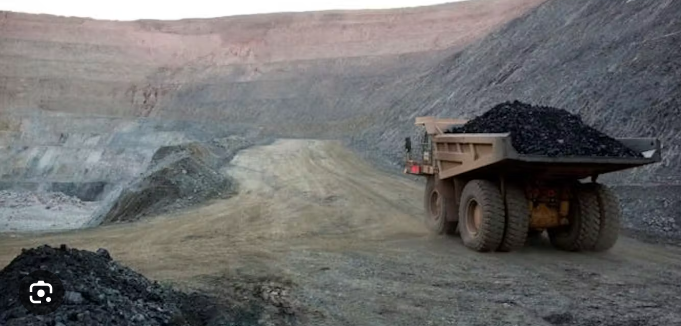Heathrow Airport in the United Kingdom currently consumes more energy than the entire West African country of Sierra Leone. Although Africa accounts for less than 4% of all global greenhouse gas emissions, many of its countries face significant threats from climate change, including increased droughts, floods, heat waves and potential harvest failures.
Climate change costs the continent $5-7 billion a year, a figure expected to rise to $50 billion by 2030.
Its impact is estimated to push 50 million Africans below the poverty line, while 100 million risk being displaced. At the same time, around 600 million people in Africa still do not have access to energy which is essential for economic development.
It is essential to tackle the dual imperative of sustainable development – meeting the needs of the present without negatively impacting the future – and economic growth in Africa. This was a central theme of the first African Climate Summit, held in Nairobi last September. However, these challenges are generally seen as diametrically opposed and often approached separately. This conversation needs to change. We must recognize that sustainable development and economic growth are interdependent – one cannot exist without the other.
Based on my research on the role of multinational corporations in the development of emerging markets over the past decade, what is missing from the debates are answers to the question facing many commodity-rich African countries : should they use their natural resources for development and preserve the environment, or should they seek an alternative that recognizes that sustainable development and economic growth are interdependent?
Africa’s economy relies heavily on the extraction of natural resources, including oil, gas and minerals such as copper, cobalt, gold and diamonds.
In fact, 45 African economies already rely on commodity exports, including fossil fuels. Yet they are under increasing pressure to turn their backs on this potentially lucrative source of income.
Rather than making the simplistic argument that all extractive activity is bad, we should ask ourselves how to extract resources while causing minimal damage to the environment.
Getting around simplistic answers
Africans are demanding, not without reason, the same type of economic opportunities that people in the North enjoy. But therein lies the problem. To achieve this, the most obvious solution for many African countries is to adopt the economic development model employed by current developed countries. This means that they must exploit the significant and relatively untapped natural resources that lie within their borders.
As former Nigerian President Olusegun Obasanjo said during Africa Energy Week 2023,
Where is justice when you use what you have at your disposal (fossil fuels), but we (Africans) cannot use it? You want to keep us in the usual position of underdevelopment. We refuse this!
The reality in many African countries is that the use of natural materials present on their territory is crucial for the pursuit of their economic development.
Many have argued that Africa can become a green industrial hub to harness its renewable energy resources and lead the charge towards decarbonization. But to achieve this technological transformation and build the necessary batteries, solar panels and electric vehicles, raw materials are needed.
Companies must find better ways to extract resources while causing minimal damage to the environment.
The good news is that it already is. Mining companies like Bill Gates-backed KoBold Metals are now using artificial intelligence to predict the location of deposits, minimizing the negative environmental effects of test drilling.
Companies are also exploring the potential of keyhole mining technology to reduce the need for surface mining, which has a significant environmental impact.
The challenge of context
To succeed, a green revolution needs money, innovation and technology. It must also meet the specific needs of each country and even each person. In other words, launching a green revolution is costly and context-dependent.
Green technologies have generally been designed, tested and implemented in developed countries.
Solar power works if your country has a reliable and extensive energy grid that can efficiently store and distribute the energy produced. It is not very practical when applied to a country emerging from a period of civil war and whose energy network is limited, damaged or non-existent.
Take the example of the installation of solar street lights in Nigeria. The idea sounds great and uses technology that works elsewhere. However, it has proven to be ineffective in practice. This is not an isolated case.
A 2017 study revealed some of the common causes of failure of renewable energy initiatives in sub-Saharan Africa. The study analyzed 29 publicly funded projects in ten countries, ranging from the electrification of public institutions and solar street lighting to rural microgrid electrification.
The study found that common factors contributing to failure included political agendas, flaws in the project award process, insufficient stakeholder cooperation, problems in project planning and implementation, lack of effective maintenance and challenges related to public acceptance and inclusion. The last two points underline the importance of the local context in green projects.
Time and money
Large sustainable solutions such as wind farms, public transport networks or geothermal power plants also fall short when viewed from a more local perspective. In many developing countries, energy needs can be as localized and immediate as a person going into the forest to collect wood to cook their evening meal. Big projects take time that those who need the energy now simply don’t have.
Then comes the question of mobilizing external investment for these projects. The Nairobi Declaration on Climate Change, signed at the African Climate Summit in September 2023, called for a six-fold increase in renewable energy capacity across the continent. Yet, according to a report published in 2022 by the Climate Policy Initiative, Africa has only received 12% of the funding it needs to address climate impacts. This is explained, in part, by concerns about the risk of investing on the continent.
Involve stakeholders appropriately
It is also important that “green” development benefits as many local stakeholders as possible. While governments are obviously expected to lead this conversation, businesses must share this responsibility.
I’ve written before about how businesses can communicate better with different stakeholders. It is also essential that they correctly understand their different needs and the contexts in which stakeholders live.
Differences in how people obtain food, shelter and energy can be significant, even within a single country. A one-size-fits-all plan won’t necessarily work for everyone.
Too often, companies are wrong in their assumptions about what stakeholders want and need to improve their lives.
In developing countries, very few people will buy an eco-stove because it is better for the environment. On the other hand, they will buy it if it makes their life easier. The only way to understand people’s needs is to integrate them into the process from the start. Companies must design products and develop sustainable solutions. But they must also be practical and meet specific needs.
Creating new pathways to sustainability
As countries around the world seek to continue their economic development, they must also deal with the growing impact of climate change.



